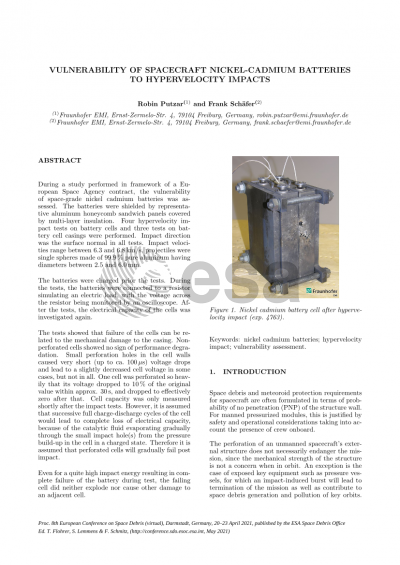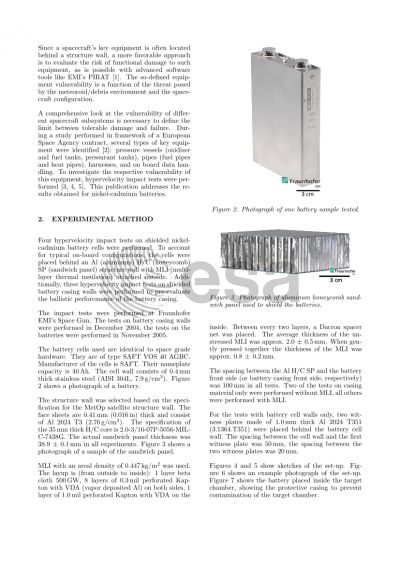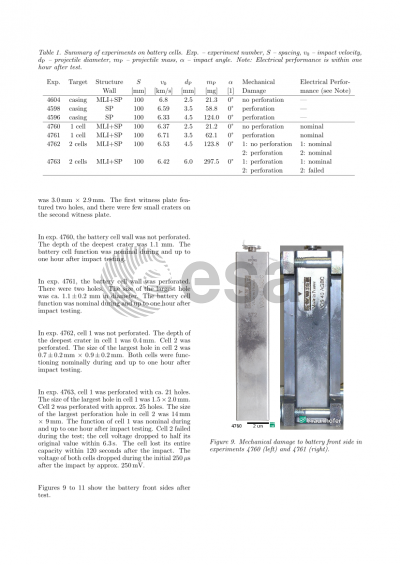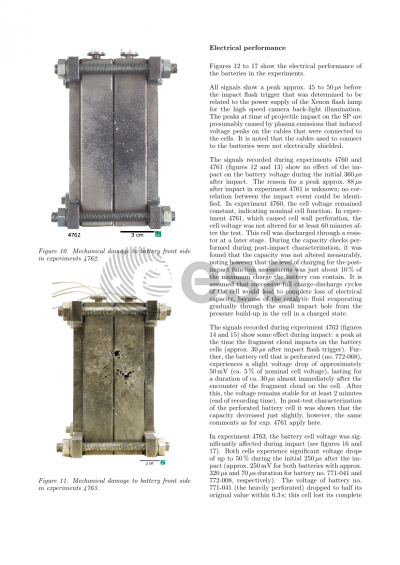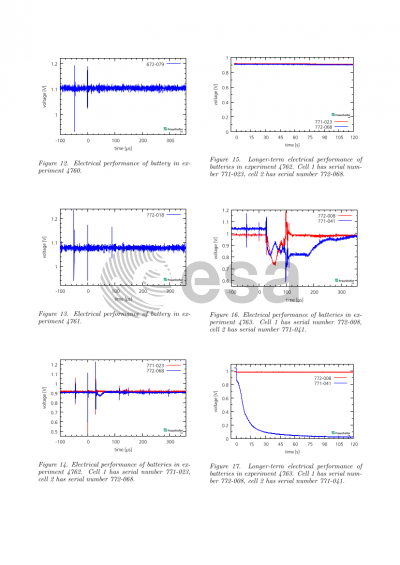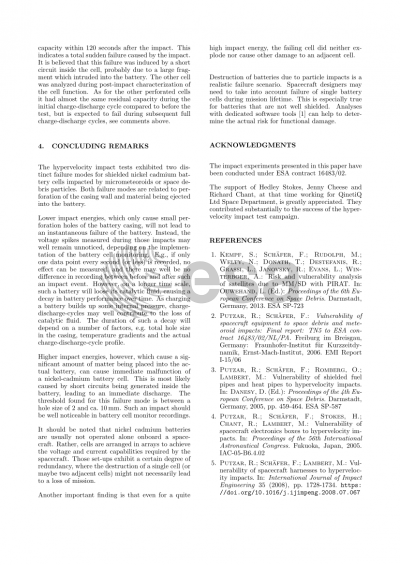Document details

Abstract
During a study performed in framework of a European Space Agency contract, the vulnerability of space-grade nickel cadmium batteries (SAFT VOS 40 AGBC) was assessed. The batteries were shielded by representative aluminum honeycomb sandwich panels covered by multi-layer insulation (MLI). Four hypervelocity impact (HVI) tests on battery cells and three HVI tests on battery cell casings were performed. Impact direction was the surface normal in all tests. Impact velocities range between 6.3 and 6.8 km/s, projectiles were single spheres made of 99.9% pure aluminum having diameters between 2.5 and 6 mm.
The batteries were charged prior the tests. During the tests, the batteries were connected to a resistor simulating an electric load, with the voltage across the resistor being monitored by an oscilloscope. After the tests, the electrical capacity of the cells was investigated again.
The tests showed that failure of the cells can be related to the mechanical damage to the casing. Non-perforated cells showed no sign of performance degradation. Small perforation holes in the cell walls caused very short (up to ca. 100 µs) voltage drops and lead to a slightly decreased cell voltage in some cases, but not in all. One cell was perforated so heavily that its voltage dropped to 10 % of the original value within approx. 30 s, and dropped to effectively zero after that. Cell capacity was only measured shortly after the impact tests. However, it is assumed that successive full charge-discharge cycles of the cell would lead to complete loss of electrical capacity, because the catalytic fluid can evaporate gradually through the small impact hole from the pressure build-up in the cell in a charged state. Therefore it is assumed that perforated cells will gradually fail post impact.
The paper will present the results of the impact experiments, including mechanical damage and electrical curves, as well as an assessment of failure threshold for both casing failure and immediate cell failure.
Preview
